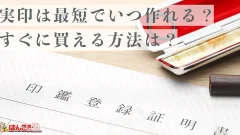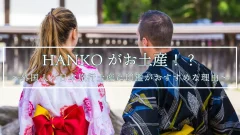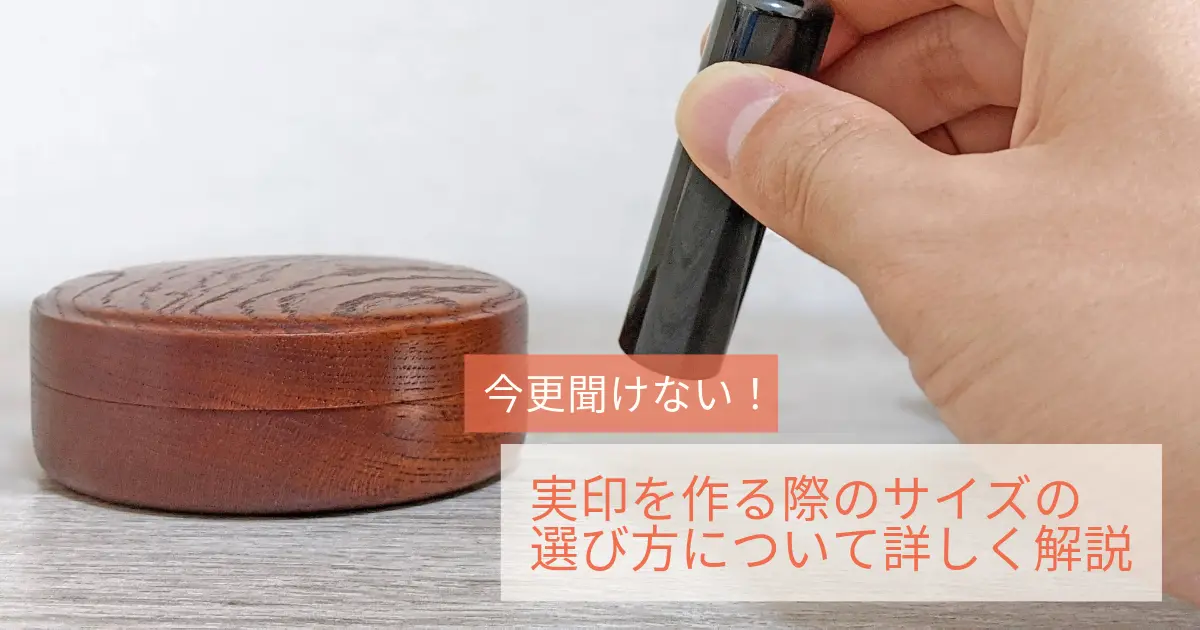A seal is used when receiving mail or when processing official documents, etc., to mean "I have confirmed it." Your personal seal is like your personal signature, so it is important that the typeface is easy to read. The choice of font is surprisingly important when making a HANKO, and there are certain fonts that are preferred for mitōin. In this article, we will introduce how to choose a font when creating a personal seal and the characteristics of the font.
What is a registered seal?
A personal seal is a HANKO that has not been registered, and is a HANKO that is affixed for the purpose of approval or confirmation. It can be said that the personal seal is the HANKO that we use most often, such as when receiving mail or completing official procedures. In other words , the seal is like your signature. HANKO held by individuals include registered seals and bank seals in addition to registered seals, each of which has a different role. From a security perspective, it is recommended that you carry your personal seal separately as a personal seal.
How to choose a font for your seal
There is no set font for the seal; you can choose any font you like. However, a personal seal is a HANKO that is meant to be seen by others as your signature, so it is important that it is easy to understand and read. Please refer to the characteristics of the fonts below when choosing one.
Types and characteristics of HANKO fonts
Introducing the fonts and characteristics commonly used for HANKO.
Inso body
Inso-tai is a typeface unique to HANKO, and is an arrangement of seal calligraphy, which is the basis of kanji. It is characterized by thick letters and no gaps in the seal. This typeface has a soft impression and is easy to use for both men and women. Because the characters are not easily readable at a glance, they are used more for registered seals and bank seals than for mitho.

Seal font
Seal font is a font that has been popular in Japan for a long time and is also used on banknotes. It is characterized by the letters being broken and having a complicated shape, making them difficult to distinguish. Because it is difficult to duplicate, it is often used for bank seals as well as registered seals.

Kointai
The typeface has thick characters that are easy to read overall, and the thickness of the characters is not uniform, giving it a rounded and soft impression. It is characterized by a clear and clean impression. This typeface is widely used as a seal.

block font
It is a preferred typeface for a personal seal because it has clean, easy-to-read characters. It is easy to use for both men and women and gives a beautiful impression. This typeface is often used for the name stamps of killer whales. However, it is not suitable for registered seals or bank seals because the letters are not broken and are easily duplicated.

Gyosho font
Gyosho is a typeface that is a variation of regular calligraphy, and is characterized by letters that look like they were written with a calligraphy brush. The smooth, flowing letters give a gentle impression and are popular with both men and women. However, like the kaisho font, the letters do not have any irregularities and are easily copied, so they are not suitable for use as registered seals or bank seals.

Conclusion: Preferred font for mitōin
For certified seals that require an easy-to-read and easy-to-understand font, we recommend koin fonts and block fonts. It is easy to distinguish the characters just by looking at the impression of the seal, making it suitable for use as a personal seal.
[Recommended fonts for seals]・Koin font, Kaisho font, Gyosho font
[Recommended fonts for registered seals and bank seals] Inso fonts and seal fonts
How to make a registered seal
Since a personal seal is a HANKO that is used frequently on a daily basis, we recommend one that is easy to use and durable. We will introduce the process of creating a personal seal at Hanko Shop 21.
1.Determine the size of the seal
The general size of the seal is a round seal with a diameter of 10.5mm to 12mm. We recommend a slightly smaller size that does not extend beyond the stamp area.
2, Decide on the characters to be engraved
The letters engraved on the seal are generally the surnames of both men and women.
3.Choose a font
There is no set font for the mitōin, but we recommend koin fonts or block fonts, which are easy to understand and read. At Hanko Shop 21, you can choose from koin font, kaisho font, gyosho font, seal font, and inso font.
4.Choose the stamp material
For HANKO that will be used for a long time, we recommend highly durable seal materials. We would like to introduce some of the stamp materials that can be made at Hanko Shop 21.
ivory
Easy to press and leaves a beautiful impression. It has excellent durability and is recommended for long-term use.
Titanium
Highly durable and can be used semi-permanently. It is also popular for its stylish appearance.
white dutch buffalo
The beautiful milky white color is popular among women. It also has excellent durability.
natural black buffalo
The beautiful natural black stamp material has a solid feel and is popular among men. It also has excellent durability.
summary
A personal seal is a HANKO that is often used in daily life and acts as your signature. HANKO will be seen by many people, so choose a font that is easy to read and understand. We recommend fonts such as koin, kaisho, and gyosho for the seal. At Hanko Shop 21, in addition to these three types, you can also choose an insō font or a seal font, so please order your mitsho in your favorite font.
Related article
 日本語
日本語 English
English 简体中文
简体中文 繁體中文
繁體中文 한국어
한국어 ไทย
ไทย Tiếng Việt
Tiếng Việt Indonesia
Indonesia Français
Français Español
Español Português
Português







